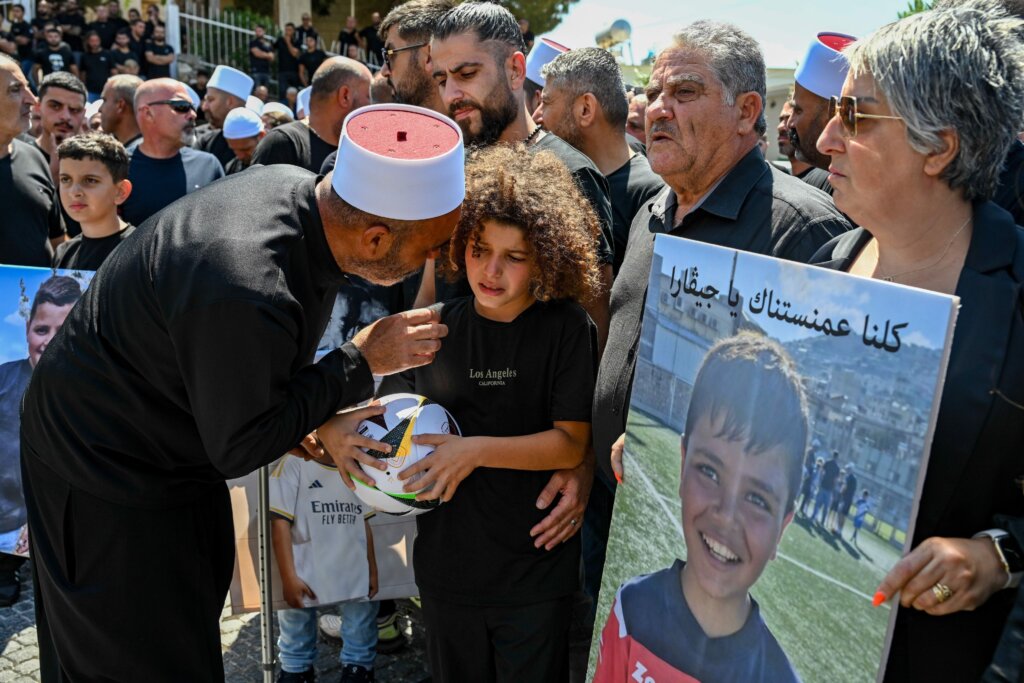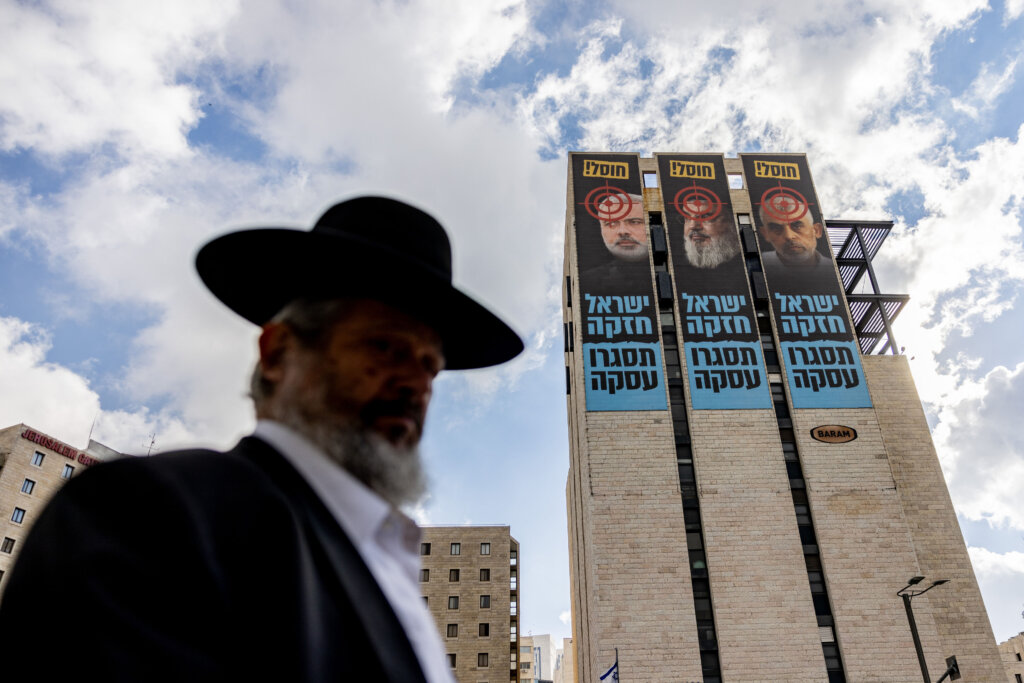
Victory for Israel in Sight on Multiple Fronts
By: David R. Parsons, ICEJ Senior Vice President & Spokesman
After 16 months of intense fighting, Israel is emerging victorious in several key arenas of the multifront war triggered by the Hamas terrorist invasion from Gaza on October 7, 2023. The battle has essentially been won on several fronts, while others await closure, and still others involve threats that remain largely untouched yet by the long arm of the IDF.
A Hopeful Victory for Israel in 2025
This regional review, starting along the Gaza border where it all began, offers an answer.
The Gaza Front
As we enter 2025, events in Gaza and elsewhere forced Hamas to make compromises in the mediated talks over a hostage release deal. Isolated and in tatters, Hamas dropped its core demands for a complete end to the war and full IDF withdrawal before any hostages were released, which resulted in a three-phase ceasefire agreement that includes the exchange of 33 hostages for prisoners and restoring a sustainable calm over 42 days in the first phase. Three female hostages indeed returned home the day the ceasefire went into effect.
Hamas has been severely weakened to the point it fears losing control over Gaza, while a devastated Hezbollah had to drop out of the fighting in the north. In addition, US President Donald Trump took office in Washington and will likely pursue a much stricter policy against Hamas—especially since it still holds several Americans hostage.
Israeli Prime Minister Benjamin Netanyahu continues to reject any post-war role for the Palestinian Authority (PA) in Gaza and insists Israel will have ultimate security control over the entire Gaza Strip for the foreseeable future. In Israel there is speculation that the Gaza ceasefire will not last through the various phases.
The Northern Front
The Hezbollah terror militia in Lebanon quickly joined the fray on October 8, 2023, hoping to draw Israeli troops and firepower away from Gaza as a means of supporting its fellow Iranian-backed militia, Hamas. For months thereafter, Hezbollah and the IDF engaged in a daily artillery duel largely confined to around six miles on either side of the Lebanese border. Israeli leaders had feared terrorist infiltrations by Hezbollah’s elite Radwan force, similar to what the Nukba commandoes of Hamas did on October 7, and thus evacuated 65,000 Israeli civilians from the immediate border area. But it turned out Hamas had caught Hezbollah by surprise as well, and they were content with a war of attrition against Israel right along the northern border.

That is, until Israel took the initiative to confront the Hezbollah threat more squarely following a rocket strike on a Golan Druze village that killed a dozen children in a playground. In response, Israel started taking out one senior Hezbollah leader after another, all the way up to the head sheikh himself, the brash Hassan Nasrallah. At the same time, Israeli intelligence activated a long-planned clandestine operation to blow up rigged pagers and walkie-talkies in the hands of several thousand upper-level Hezbollah commanders, devastating their ranks.
It turns out that Israeli leaders had all along considered Hezbollah a much more serious threat than Hamas and had concentrated their intelligence resources and military training on defeating the Lebanese Shi’ite militia. This allowed the IDF to make quick work of Hezbollah, decapitating its leadership and destroying up to 80 percent of its missile arsenal in a matter of weeks. When Hezbollah got so weakened it stood to lose its grip on power over Lebanon, Iran backed its decision to call it quits.
Thus, a ceasefire has been reached in northern Israel, although the IDF is still operating just inside south Lebanon to find and destroy more Hezbollah weapons and outposts. The Shi’ite militia is battered enough to be possibly disarmed by the rival Christian and Sunni Arab forces in the Lebanese army, who are still upset with Hezbollah for joining the fight to keep Syrian dictator Bashar al-Assad in power, and then unilaterally dragging Lebanon into another war with Israel.
The Syrian Front
Meanwhile, dramatic developments in neighboring Syria have greatly impacted the threats to Israel on several fronts. The brutal Assad dynasty that ruled from Damascus for over 50 years was suddenly toppled by Sunni rebel forces that had been trained and rearmed by Turkey following their defeat in the nation’s bitter yet still smoldering civil war. Surprisingly, these rebel units swept the Assad regime from power in only 12 days. This has brought several positive changes for Israel, such as cutting off Hezbollah from any resupply of arms by Iran via the usual land route through Syria. However, some of these victorious Sunni rebel forces are affiliated with ISIS and al-Qaeda, and they may seek ways of attacking Israel in future. Turkish President Recep Tayyip Erdogan also seems determined to become the new overlord of Syria and threaten Israel from there.
The Eastern Front
IDF forces have done a solid job in confronting Palestinian terror factions operating in Judea/Samaria (West Bank) over the past 15 months of fighting. Lately, Iran has tried to smuggle more weapons into this theatre through Jordan with meagre results. But it has provoked even the PA to launch a surprising crackdown on Hamas and Islamic Jihad elements in Jenin and other hotbeds of terror, to protect what little turf the PA does control. This indicates PA leader Mahmoud Abbas thinks Hamas is now weakened enough for his listless forces to take them on, and that he wants to show the West he can be given control over Gaza.
The Southern Front
The Houthi rebels in Yemen continue to strike at Israel with Iranian-supplied long-range missiles and drones. In the latest exchange, Israeli air strikes heavily damaged three ports Iran uses to deliver these weapons to the Houthis. Defending against the threat of these longer-range armaments, especially the new, more advanced types of low-flying armed drones, will remain a problem for Israel going forward, even if ceasefires are reached on other fronts.

The Iranian Front
Iran has now suffered several major setbacks to its regional plans of hegemony and eradicating the Jewish State. Both Hamas and Hezbollah have been crushed by the IDF over the past year, and Tehran was unable to stop it, which has sent a bad signal to its other regional proxy militias in Iraq and Syria. The loss of its foothold in Syria is another huge blow, leaving its most prized proxy Hezbollah isolated and stirring discontent at home over all the money and resources wasted in propping up Assad. In addition, the Iranian regime has been embarrassed the two times it has directly targeted Israel with long-range missile and drone attacks, causing little damage in Israel and drawing IDF responses that have left the Islamic Republic totally vulnerable to further Israeli attacks. Now that Trump is in office, everyone is waiting to see whether Israel will press its advantage by attacking Iran’s nuclear facilities.
The Home Front
Israel is poised to secure a resounding victory over its enemies Hamas and Hezbollah and hopes to recover and rebuild its northern and southern border communities quickly, while also actively pursuing peace once more with its Arab neighbors. With the help of the Trump administration, it may be possible to build on the Abraham Accords by bringing Saudi Arabia into the fold of Arab nations reconciling with the Jewish State. Perhaps the door will even begin to open to future normalization deals with Lebanon and Syria. One obstacle will remain, however—the fate of the Palestinians. These Arab countries will most likely continue to insist on the creation of a Palestinian state, a demand that most Israelis are reluctant to agree to so quickly in the wake of the October 7 massacres, considering it to be a reward for terrorism of the worst kind.
Related Articles
Would Palestinian Statehood Bring Peace to the Middle East?
Israel and the Church: A Coming Reformation
What Is Antisemitism? Unpacking History’s Longest Hatred


